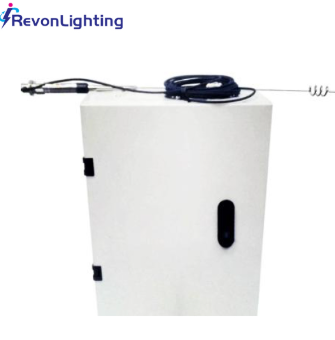In the intricate ecosystem of helipad operations, the helipad lighting controller stands as a pivotal component, often overlooked but essential for seamless and safe helicopter landings and take - offs. This device is not just a simple switch; it is the intelligent nerve center that manages the complex lighting system of a helipad.
The Core Functions of a Helipad Lighting Controller
Intensity Adjustment
One of the primary functions of a helipad lighting controller is to adjust the intensity of the lights. Different weather conditions demand varying levels of brightness. For example, during a clear night, the lights may not need to be at full intensity, as it could cause glare for the pilots. In contrast, during heavy fog or rain, the controller needs to boost the brightness to ensure maximum visibility. Some advanced controllers can automatically sense the environmental conditions using built - in sensors, such as light sensors and weather sensors, and adjust the light intensity accordingly.
Color - Coded Lighting Control
As we know, helipads rely on color - coded lighting for safety. Green lights indicate the touchdown and take - off area (TLOF) and signify safety for landing or take - off, while red lights mark obstacles or restricted areas. The lighting controller is responsible for accurately controlling these color - coded lights. It ensures that the green lights at the TLOF are functioning correctly and that the red lights around obstacles are clearly visible. In case of any malfunction, the controller can be programmed to send out an alert, notifying the maintenance team to address the issue promptly.

Flashing Pattern Management
Helipad lights often have specific flashing patterns to enhance their visibility and convey different messages. The lighting controller manages these patterns. For instance, a rapid - flashing red light may be used to indicate an emergency situation on the helipad, such as a mechanical failure or a hazard on the landing area. The controller can be configured to switch between different flashing patterns based on pre - set conditions. This allows for quick and clear communication with the helicopter pilots, even from a distance.
Technological Features of Modern Helipad Lighting Controllers
Digital Connectivity
Modern helipad lighting controllers are equipped with digital connectivity features. They can be connected to a central control system, either locally or remotely, via wired or wireless networks. This connectivity enables operators to monitor and control the lighting system from a distance. For example, in a large airport with multiple helipads, the lighting of all the helipads can be managed from a single control room. Additionally, the controller can be integrated with other aviation systems, such as flight management systems, to provide real - time information to the pilots about the helipad's lighting status.
Energy - Efficiency Optimization
With the growing focus on energy conservation, helipad lighting controllers are designed to optimize energy usage. They can be programmed to turn off or dim the lights during periods of inactivity, such as when no helicopters are expected to land or take off. Some controllers also support the use of energy - efficient lighting sources, such as LED lights, and can further enhance their energy - saving capabilities by adjusting the power output based on the lighting requirements.
| helipad lighting controller |
| helipad lighting controllers |
Maintenance and Reliability
Regular maintenance of the helipad lighting controller is crucial. It involves checking the hardware components for any signs of wear and tear, updating the software to ensure optimal functionality, and testing the controller's response to different scenarios. A reliable lighting controller is essential for the safety of helicopter operations. Any malfunction in the controller could lead to incorrect lighting signals, which may put the lives of the pilots and passengers at risk. Therefore, most lighting controllers are designed with redundant systems to ensure continuous operation in case of a primary component failure.
In conclusion, the helipad lighting controller is an indispensable part of a helipad's infrastructure. Its ability to manage light intensity, color - coded signals, and flashing patterns, along with its advanced technological features, makes it a key element in ensuring the safety and efficiency of helicopter operations. As technology continues to evolve, we can expect even more sophisticated and reliable helipad lighting controllers to emerge, further enhancing the safety of heliport operations.